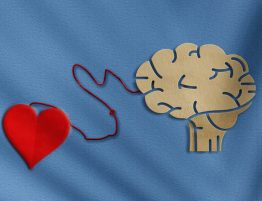
Over the years, people with a genetic condition causing thickening of the heart muscle, known as hypertrophic cardiomyopathy, have received confusing advice on exercise.
New guideline revisions aim to clear things up. They spell out that not only is exercise important and healthy but that some people with the condition, if properly monitored, might be able to play sports safely at even elite levels.
The updated guidelines, published Wednesday in the American Heart Association journal Circulation, affirm that mild and moderate-intensity recreational exercise is good for people with hypertrophic cardiomyopathy, said Dr. Steve Ommen, medical director of the Mayo Hypertrophic Cardiomyopathy Clinic in Rochester, Minnesota.
The update adds that vigorous exercise is “reasonable” if patients get a careful annual evaluation, said Ommen, who led the AHA and American College of Cardiology committee that wrote the new guidelines.
And while the update continues earlier advice that elite-level athletes need to be evaluated and monitored, it states that hypertrophic cardiomyopathy should not automatically disqualify them from competitive sports.
Hypertrophic cardiomyopathy, or HCM, is a genetic condition. When the heart muscle thickens, the heart does not squeeze out blood efficiently, leading to symptoms of breathlessness and chest pain. HCM affects an estimated 1 in 500 people, but many cases aren’t diagnosed. Each year, Ommen said, the yearly risk of someone with HCM having a cardiac arrest is slightly less than 1%. That rate seems independent of physical activity, he said.
HCM is treated through medication and surgical procedures. Patients also are encouraged to live a heart-healthy lifestyle. That includes exercise.
“Our goal for our patients with HCM is they’d be able to achieve the same physical activity recommendations as the rest of us,” Ommen said. That means at least 150 minutes a week of moderate-intensity aerobic exercise, 75 minutes a week of vigorous aerobic exercise, or a combination of both.
Symptoms might prevent that for some people, he said, “but in the absence of symptoms, they should all be getting low- to moderate-intensity exercise most days of the week. That includes both cardiorespiratory exercise as well as resistance/strength training.”
Advice on exercise has confused both doctors and patients over the years, said Dr. Matthew W. Martinez, director of the hypertrophic cardiomyopathy and sports cardiology program at Atlantic Health System in Morristown, New Jersey.
“Mild to moderate exercise has really been recommended all along,” said Martinez, who helped write the update. “But the message that patients have been hearing is, ‘Don’t exercise.'”
That misconception is rooted in older understandings about the risks, Ommen said.
In the 1980s, people with HCM were limited to low-intensity sports. Early data about sudden death had led to a “dogma” that HCM should disqualify people from competitive athletics, Ommen said, which “inadvertently, and unfortunately, got extended to: ‘Patients with HCM shouldn’t exercise vigorously.'”
More recent research suggests that less than 10% of sudden cardiac deaths in young people are related to HCM and that the risk of death is not disproportionate in athletes.
Other research suggests that for people with HCM, “the more you exercise, the better you do,” Martinez said.
The previous update, in 2020, was the first time the guidelines specifically said people with HCM should exercise, he said. Moderate exercise includes activities such as walking at a pace that causes a slight increase in breathing and heart rate, but you’re still able to have a conversation, Martinez said. Vigorous exercise includes activities such as running that cause larger increases in heart rate and breathing, where it would be difficult to carry on a conversation.
The 2020 update also emphasized the need for doctors and patients to work together on assessing risks as part of a process called shared decision-making. That year, the recommendation became that people with HCM might be able to participate in college- and professional-level sports after a comprehensive assessment.
Fresh research means the revised guidelines can be more specific about HCM and intense exercise, said Martinez, who is a cardiologist for the New York Jets, Major League Soccer and the National Basketball Players Association.
A study published in May 2023 in JAMA Cardiology found that vigorous exercise did not raise the risk of death for people with hypertrophic cardiomyopathy as compared to those who exercised moderately or not at all. That study involved 1,660 people with the disease.
Soon after, another study appeared in the Journal of the American College of Cardiology. It looked at 76 elite athletes with genetic heart diseases, more than half of whom had hypertrophic cardiomyopathy. Martinez, who was senior author on that work, said it showed that when such athletes were evaluated case-by-case, they could safely return to playing sports without any added risk.
The guidelines now state that “for most patients with HCM, universal restriction from vigorous physical activity or competitive athletics is not indicated.”
The update reflects that HCM varies from person to person, Martinez said, so advice can’t be one-size-fits-all. “What we’re now doing is saying, ‘You have a disease. Let’s see what you can do safely, and let’s see what you’re able to do over time.'”
Researchers don’t have an abundance of data on the risks to elite athletes, Ommen said, so there are limits.
“We didn’t give the green light for everyone to participate,” Ommen said. The guidelines emphasize the need for athletes to be evaluated individually and to meet annually with a hypertrophic cardiomyopathy expert.
When discussing risks with that doctor, Ommen said, anybody with HCM should be asking questions such as, “What are your recommendations for my physical activity? How much exercise should I be doing? What types of exercises can I do? And at what level of intensity?”
Doctors can evaluate someone’s risk based on factors such as their age, family medical history, personal history, heart scans and performance on an exercise stress test, Martinez said.
Advice could keep shifting because more research is needed on what’s safest for people with HCM at all levels, Martinez said.
Meanwhile, everyone with HCM needs an exercise plan, he said. “Not only is it safe to do it, but you ought to be doing it.”




